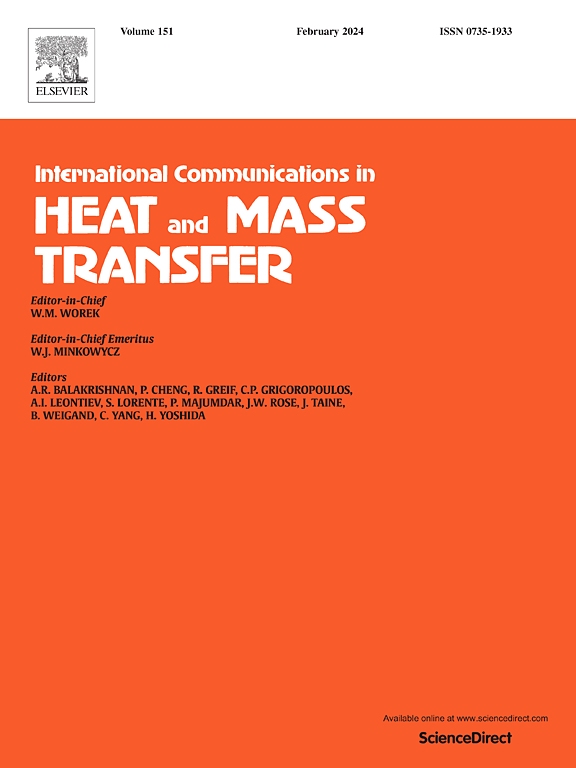An analytical inverse model for predicting the critical thickness of the protective bank inside a cylindrical smelting furnace
IF 6.4
2区 工程技术
Q1 MECHANICS
International Communications in Heat and Mass Transfer
Pub Date : 2025-03-19
DOI:10.1016/j.icheatmasstransfer.2025.108874
引用次数: 0
Abstract
A protective bank is essential for ensuring the integrity and the energy efficiency of high temperature electric ilmenite smelting furnaces. If the thickness of the protective bank is insufficient or unstable, the refractory walls are directly exposed to molten materials, extreme thermal loads and chemical interactions, accelerating degradation and increasing heat losses. Conventional inverse models rely on iterative processes with high computational costs, limiting real-time capabilities. To overcome this limitation, an analytical inverse model is developed, enabling real-time assessment of furnace integrity based on sensor measurements.
In this paper, a direct numerical model is first developed and validated to simulate the thermal behavior of a cylindrical smelting furnace. This 2D axisymmetric model accounts for the presence of two superimposed melted layers, iron and slag, while incorporating phase change and endothermic chemical reactions. Next, a 1D analytical inverse model is introduced to predict the critical thickness of the protective bank. Sensor placement is analyzed, demonstrating that deep insertion into the refractory wall enhances measurement accuracy.
The proposed inverse model successfully determines the critical bank thickness and is further extended to reconstruct its profile by integrating multiple sensors along the furnace height. To account for 2D heat transfer effects in the iron and slag layers, a model correction is introduced, significantly improving prediction accuracy. The results confirm the effectiveness of the proposed approach. Additionally, a measurement error analysis highlights the model's robustness, reinforcing its potential for real-time monitoring and control of high-temperature smelting furnaces.
求助全文
约1分钟内获得全文
求助全文
来源期刊
CiteScore
11.00
自引率
10.00%
发文量
648
审稿时长
32 days
期刊介绍:
International Communications in Heat and Mass Transfer serves as a world forum for the rapid dissemination of new ideas, new measurement techniques, preliminary findings of ongoing investigations, discussions, and criticisms in the field of heat and mass transfer. Two types of manuscript will be considered for publication: communications (short reports of new work or discussions of work which has already been published) and summaries (abstracts of reports, theses or manuscripts which are too long for publication in full). Together with its companion publication, International Journal of Heat and Mass Transfer, with which it shares the same Board of Editors, this journal is read by research workers and engineers throughout the world.

 求助内容:
求助内容: 应助结果提醒方式:
应助结果提醒方式:


